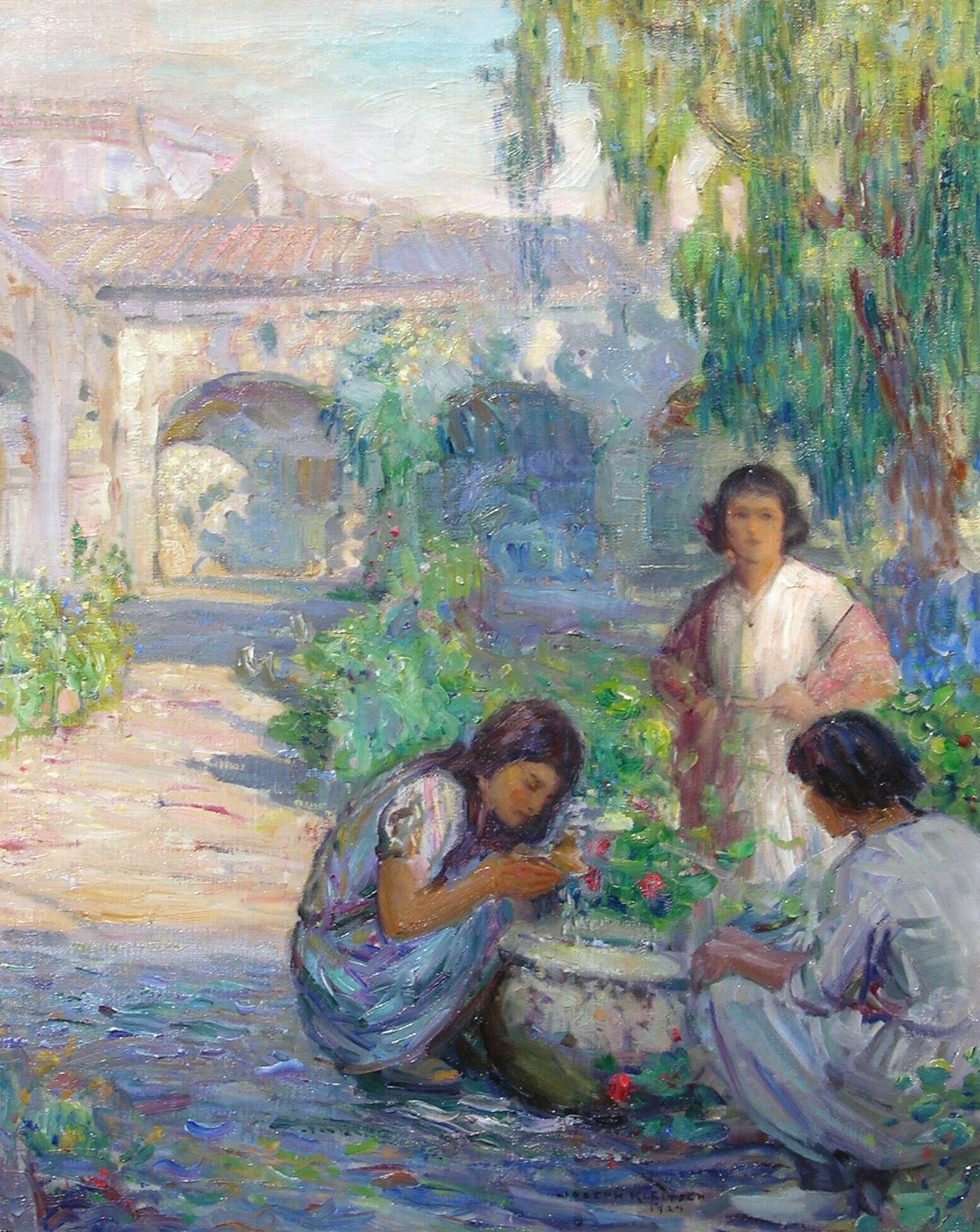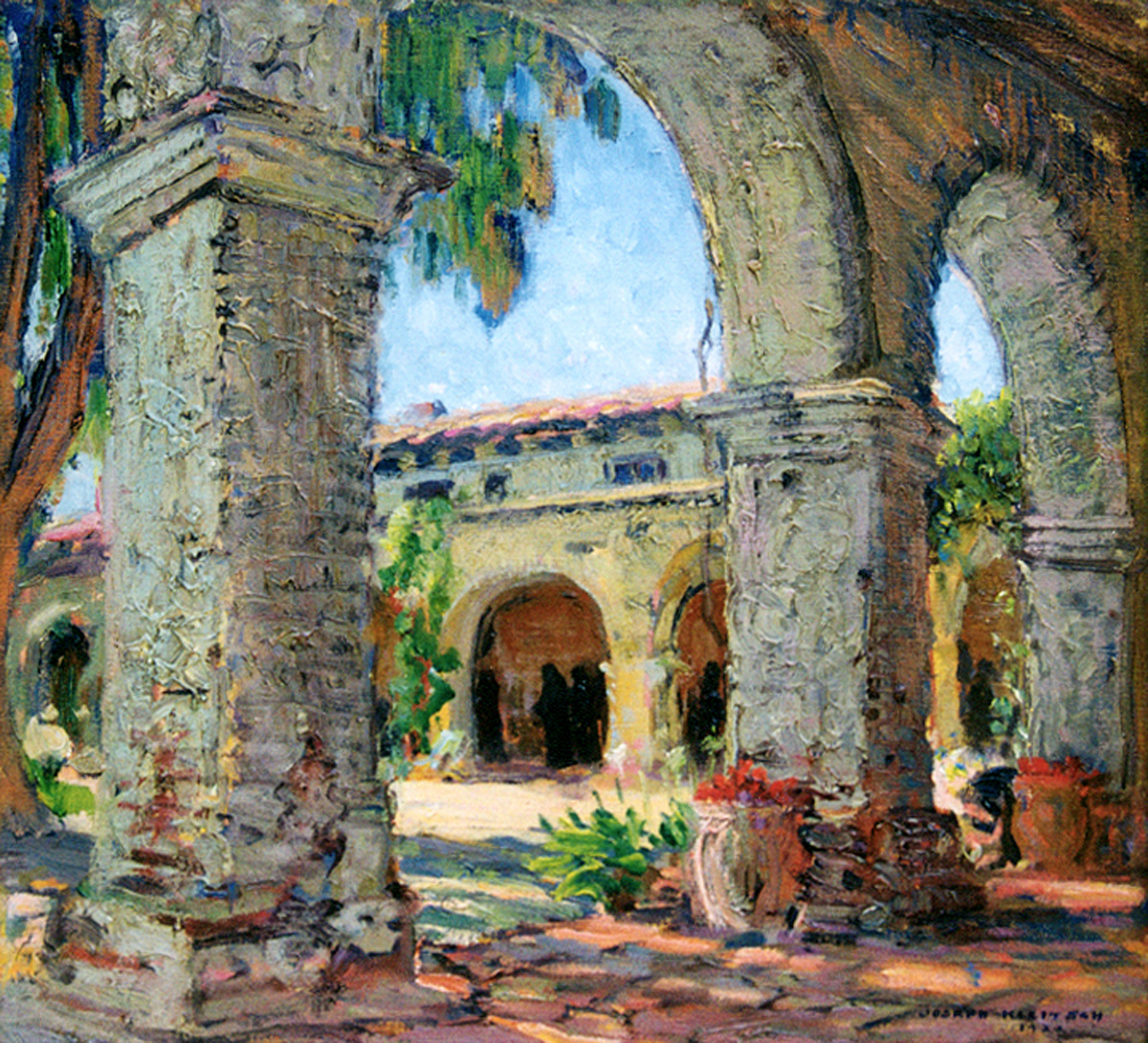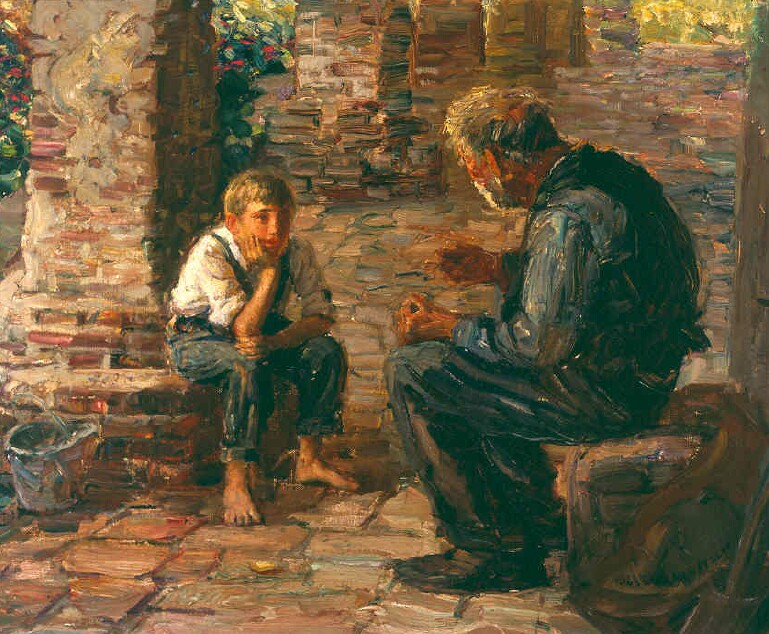



During the period of his residence in Southern California, Joseph Kleitsch witnessed one of the region's most dramatic population booms. As small villages transformed into towns and bustling cities, Kleitsch furiously painted the rural areas and iconic emblems of old California, before their demise. One of his favored subjects was the California mission.
Looking to the ruins of the San Juan Capistrano Mission, Kleitsch found inspiration in the mission gardens, where the varied colors, sunlight, and shadows provided ideal subject matter for the Impressionist painter. In December of 1922, Kleitsch began a painting tour, visiting San Juan Capistrano to paint more scenes of the mission after his earlier visit in 1920. He also traveled to nearby San Luis Rey in northern San Diego County to paint Mission San Antonio de Pala where the colorful nearby canyons provided additional interest. However, Mission San Juan Capistrano would remain a recurring subject throughout Kleitsch’s career.
